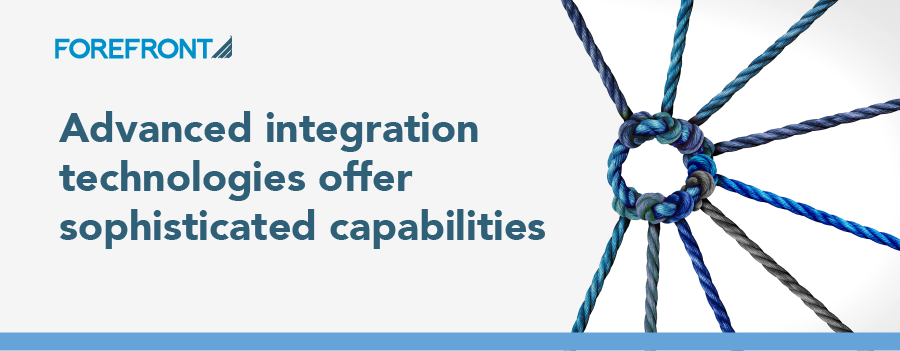
7 Ways Project Management Supports Salesforce Success — Part 1
By Peter Michael Pirro, PMP, CCMP
In the IT business, there are strategies, processes and actions that are the difference between success and, um, less success. For a Salesforce implementation, this differentiation often is intelligent and sophisticated project management.
IT implementations come in all sizes, from the smallest application rollout to the biggest global program overhaul. And, it’s important to know that, while the number of people and technical tools you need depends on the scope of the operation, Project Management does not – it is a scalable instrument that provides underlying methods and deliverables for every size project.
Here are seven ways Project Management supports a successful Salesforce implementation:
1. Establishes Integrity
If you’ve earned a Project Management Professional (PMP) certification, or if you’ve read “Project Management Body of Knowledge” (PMBOK), you know the principles that set the table for any implementation. But let’s start with a review of them so we start with the same knowledge.
Before any requirements are gathered or mapping tables are exchanged, project management establishes principles of Responsibility, Respect, Fairness and Honesty.
These principles apply whether your industry is healthcare, robotics or sports. Every project has a technical side and a human side. By installing a good Project Management program, you bring in a set of social principles that support the human side, normalize the scene, provide structure and create a safe environment for business transactions. When you’re making make-or-break financial decisions, you need integrity on the other side of the table.
At ForeFront, our Project Management Office hires based on these tenets. And it’s no wonder that our PM experts are sought-after by our client implementation teams – they bring a myriad of tools and tactics that will help bring projects to successful completion.
These principles run deeper than any spreadsheet, and they fill what many business transactions demand: integrity. It’s important to take the time to get to know your Project Manager and walk through the four principles to find a partner who can be trusted, and who will manage your project started the right way.
2. Provides a Core Plan
The heart of Project Management exists within a plan – and it doesn’t matter if it’s a Smartsheet, MS Project document, Excel spreadsheet, simple Gantt chart or one of the many products you find on the marketplace. Tracking to a timeline with a list of milestones is necessary. Without even the most rudimentary plan, projects face the prospect of a free-fall from beginning to end, proving the adage that “failing to plan is planning to fail.” The basic starting point of a project map, in some shape or form, is essential and non-negotiable.
Expanding on the root plan brings you to the Agile toolset, which is particularly handy when implementing something as diverse and customizable as Salesforce. By dividing the project into measurable Sprints and the user stories within them, your Project Manager fleshes out the traditional timeline and makes the implementation more three-dimensional.
These Sprints aren’t manufactured out of thin air. They are outlined in your initial meetings, and they’re colored in through discovery and refinement calls. And you can go with them as is, or tailor them to suit the needs of your organization, capabilities, team and goals.
With depth added to the length and breadth of scope, the project comes to life. “Land and expand” comes into play as the initial Sprints gain solid footing and generate feedback and pivot points. User Acceptance Testing (UAT) periods help measure progress while allowing both teams to iterate and improve. Jira boards encompass the truth of the implementation by holding agreed-upon success criteria, solutions and a Work Breakdown Structure (WBS) that can be used to hold the team accountable through the end of the project (and beyond).
Without the framework of Project Management, the tools fall by the wayside, tasks are completed “as necessary,” and the valuable Salesforce capabilities often are left unexplored and unused. With all that Salesforce provides, it’s essential to take the time to plan and track.
3. Sets Detailed Expectations
One of the unwritten and often underappreciated tenets of good Project Management is the ability to set expectations. It starts with the first one-to-one call. This is where the human connection starts. And here, a frank discussion between the Project Manager and client’s team leader provides the foundation for a solid relationship and the project’s success.
This high-level, informal discussion covers topics such as communication styles, tracking methods, team meeting preferences and how time zone implications will play out. The goal is to cover what need not be covered during a kick-off or full team call. The result is a professional bond between the two managers and an environment of trust.
Shortly thereafter, with the kick-off call, the detailed Project Plan comes together, along with the Communication Plan and Jira training. This step establishes how we will work with the client, how we will discuss and document, and how we will collaborate throughout the project. The seeds planted during that initial one-to-one call now take root in the project teams. It is up to the Project Manager to make sure that growth is permitted and nurtured – there will be collaborative responsibilities to ensure that occurs.
By creating structure in the Sales phase and early interactions of the project, the ground rules require no re-negotiation or interpretation later in the project, and the client will know how much is expected of them and when. (Refinement sessions and success criteria are developed as the project progresses.)
An SME that understands the amount of work to be done, will be prepared, and will be able to maneuver appropriately to put in the necessary time when it is required.
What’s more, early exposure to tools like Jira, and time spent gaining familiarity with underlying concepts and procedures inherent to the Agile implementation, is golden.
The face value of project parameters is worth the time investment. The hidden value is transparency.
Want to know more?
For information on how ForeFront handles Project Management, contact Tom Crincoli at tcrincoli@forefrontcorp.com.




